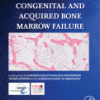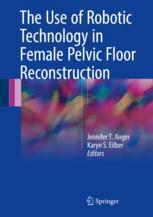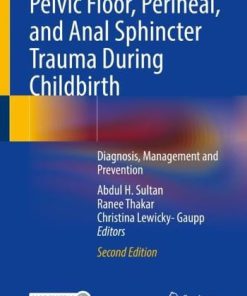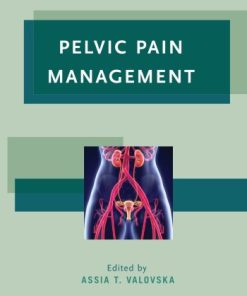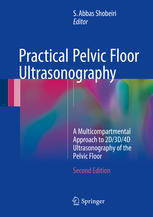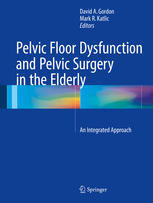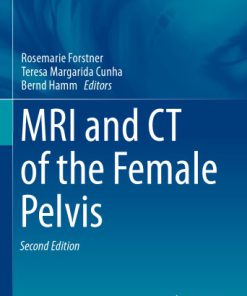Biomechanics of the Female Pelvic Floor 1st Edition by Hoyte Lennox,Damaser Margot 9780128032282 0128032286
$50.00 Original price was: $50.00.$25.00Current price is: $25.00.
Biomechanics of the Female Pelvic Floor 1st Edition by Hoyte Lennox,Damaser Margot – Ebook PDF Instant Download/Delivery:9780128032282,0128032286
Full download Biomechanics of the Female Pelvic Floor 1st Edition after payment
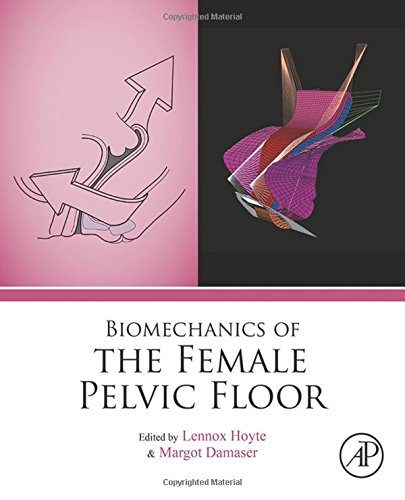
Product details:
ISBN 10:0128032286
ISBN 13:9780128032282
Author:Hoyte Lennox,Damaser Margot
Biomechanics of the Female Pelvic Floor, Second Edition, is the first book to specifically focus on this key part of women’s health, combining engineering and clinical expertise. This edited collection will help readers understand the risk factors for pelvic floor dysfunction, the mechanisms of childbirth related injury, and how to design intrapartum preventative strategies, optimal repair techniques, and prostheses.
The authors have combined their expertise to create a thorough, comprehensive view of female pelvic floor biomechanics in order to help different disciplines discuss, research, and drive solutions to pressing problems. The book includes a common language for the design, conduct, and reporting of research studies in female PFD, and will be of interest to biomechanical and prosthetic tissue engineers and clinicians interested in female pelvic floor dysfunction, including urologists, urogynecologists, maternal fetal medicine specialists, and physical therapists.
- Contains contributions from leading bioengineers and clinicians, and provides a cohesive multidisciplinary view of the field
- Covers causes, risk factors, and optimal treatment for pelvic floor biomechanics
- Combines anatomy, imaging, tissue characteristics, and computational modeling development in relation to pelvic floor biomechanics
Biomechanics of the Female Pelvic Floor 1st Table of contents:
Section 1: Principles of Pelvic Floor Anatomy and Biomechanics
Chapter One: What Biomechanics Has to do With the Female Pelvic Floor — A Historical Perspective
Abstract
Evolution of Biomechanics Through the Centuries
Biomechanics in the 20th Century and Beyond and Applications to Medicine
Chapter Two: Pelvic Floor Anatomy and Pathology
Abstract
Acknowledgment
Overview
Levator Ani and Anal Sphincters
Connective Tissue Supports of the Pelvic Organs
Interactions among Different Compartments
Conclusion
Chapter Three: Musculoskeletal Pelvic Anatomy
Abstract
The Bony Pelvis and its Articulations
The Skeletal Pelvis as a Whole
Muscles of the Thoracoabdominal Pelvic Cavity
Muscles of the Anterolateral Abdominal Wall
Muscles of the Pelvis
Fascia: In General and Specific to the Female Pelvis
Neuroanatomy of the Female Pelvis
Abdominal Wall, Pelvic Floor Dysfunction, and the Promise of Computational Modeling
Chapter Four: Introduction to Classical Mechanics
Abstract
Introduction
Structural Versus Mechanical Properties
Structural Properties
Mechanical Properties
Types of Mechanical Tests
Categorization of Material Deformations
Viscoelasticity
Viscoelastic Experiments
Conclusion
Chapter Five: Biomechanical Characterization of Native Pelvic Floor Organs and Tissues
Abstract
Introduction
Pelvic Floor Tissue Constituents and Characteristics
Functions of Pelvic Floor Organs
Common Experimental Conditions and Considerations
Cross-Sectional Area and Strain Measurements
Examples of Mechanical Testing Related to the Pelvic Floor
Biaxial Tensile Testing
Conclusions
Chapter Six: Pelvic Floor Biomechanics From Animal Models
Abstract
Current Animal Models and Their Applications
Small Animal Models
Large Animal Models
Conclusion
Chapter Seven: Mechanics of Pelvic Floor Prosthetic Devices
Abstract
Introduction
Overview of Prosthetic Devices
Mechanical Tests Used to Evaluate Synthetic Meshes
Mechanical Analysis of Mesh-Tissue Complexes
Application of Mechanical Tests to the Characterization of the ex vivo Structural Properties and Mechanical Behaviors of Synthetic Meshes
Biological Implications of Mechanical Behavior, Structural, and Textile Properties of Synthetic Meshes
Mechancis of Pelvic Floor Prosthetic Devices 10 Years From Now
Section 2: Influencers of Pelvic Floor Biomechanics
Chapter Eight: Biochemistry and Ultrastructure of Pelvic Floor Tissues and Organs
Abstract
Introduction
Pelvic Floor Musculature
Pelvic Floor Connective Tissue
Conclusion
Chapter Nine: Impact of Genetics on Pelvic Floor Biomechanics
Abstract
Introduction
Molecular and Biochemical Changes in Pelvic Floor
Genetics of Pelvic Floor Disorders
Influence of Genetics on Pelvic Floor Biomechanics
Chapter Ten: Impact of Pregnancy and Delivery on Pelvic Floor Biomechanics
Abstract
Impact of Pregnancy on Biomechanics of Pelvic Floor
Pregnancy-Induced Alterations in Vaginal Biomechanical Properties
Pregnancy-Induced Alterations in Biomechanical Properties of Pelvic Floor Muscles
Impact of Vaginal Delivery on Biomechanics of Pelvic Floor
Impact of Vaginal Delivery on Pelvic Floor Muscles
Conclusions
Chapter Eleven: Biomechanical Environment of the Pelvic Floor
Abstract
Physiological Function of the Pelvic Floor
Disruption of Pelvic Floor Biomechanics Leads to Incontinence and Prolapse
Pelvic Floor Changes with Rehabilitation
Conclusion
Section 3: Imaging and Segmentation of Pelvic Floor
Chapter Twelve: Dynamic Visualization of the Female Pelvic Floor Function
Abstract
Acknowledgments
Introduction
Ultrasound Imaging
Chapter Thirteen: Magnetic Resonance Imaging of the Pelvic Floor
Abstract
Introduction
MRI of the Pelvic Floor
Technique
Interpretation
Stress Incontinence
Bladder and Uterine Prolapse
Rectal Prolapse and Constipation
Conclusion
Chapter Fourteen: Geometric Representation of the Pelvic Organs
Abstract
MR Image Acquisition
Identifying the Pelvic Organs
Segmenting the Pelvic Organs
Types of Image Segmentation
Model Geometry
Barriers to Optimal Geometric Representation
Conclusions
Chapter Fifteen: Segmentation of Images of the Pelvic Floor
Abstract
Introduction
Image Acquisition
Manual Segmentation/Template Pool Generation
Conclusions
Chapter Sixteen: Biomechanical Characterization of the Pelvic Floor Using Tactile Imaging
Abstract
Acknowledgments
Tactile Imaging
Bench Testing
Clinical Application
Summary
Conclusions
Section 4: Biomechanical Modeling and Simulation of the Pelvic Floor
Chapter Seventeen: The Role of Computational Tools in Biomechanics
Abstract
Acknowledgment
The Need for Better Software Tools
Methods and Capabilities
Applications
Conclusions
Chapter Eighteen: Applications of Pelvic Floor Modeling and Simulation
Abstract
Introduction
Developing Anatomical 3-D Models of the Pelvic Floor
Biomechanical Models of the Pelvic Floor
Applications of Pelvic Floor Models
Summary
Chapter Nineteen: Building Pelvic Floor Biomechanical Simulations
Abstract
Introduction
Image Processing
Obtaining the Geometry
Simulation
Interpretation of Results
Chapter Twenty: Biomechanics of Pelvic Organ Prolapse
Abstract
Acknowledgments
An Introduction to Pelvic Organ Prolapse
Using Systems Analysis to Assess Biomechanical Factors Involved in Pelvic Organ Prolapse
Using Biomechanical Modeling to Obtain Insights into the Pathomechanics of Prolapse
Discussion
Conclusions
Chapter Twenty-One: Biomechanical Childbirth Simulations
Abstract
Introduction
The Mechanics of Labor
Computational Simulation of Childbirth
Conclusions
Section 5: Conclusions
Chapter Twenty-Two: What the Future Holds
People also search for Biomechanics of the Female Pelvic Floor 1st:
biomechanics of the pelvis
anatomy of the pelvic floor in females
pelvic floor biomechanics
pelvic biomechanics
biomechanics of female pelvis
Tags:
Hoyte Lennox,Damaser Margot,Biomechanics,Female,Pelvic
You may also like…
Engineering
Medicine
The Use of Robotic Technology in Female Pelvic Floor Reconstruction 1st Edition Jennifer T. Anger
Medicine
Military injury biomechanics : the cause and prevention of impact injuries 1st Edition Franklyn
Uncategorized
Science (General)


